The Altum Angelfish, a true icon of elegance in the freshwater aquarium hobby. Join us as we unravel the mystique of the Altum Angelfish, exploring its natural habitat, unique characteristics, and optimal care requirements.

Introduction:
In the realm of ornamental fishkeeping, there are only a few species that exude the charm and grace of the Altum Angelfish. With their magnificent appearance and calm behavior, Altum Angels have captured the souls of enthusiasts all over the world.
In this comprehensive guide, we board on a journey to uncover the enigmas and complexities of Altum Angelfish care, exploring their characteristics, origin, colors, and markings, ideal tankmates, life expectancy, care requirements, dietary habits, gender differences, and breeding behaviors.
Quick Sidenote: Do you want to watch this article instead of reading it? Checkout the highlight video below from our YouTube Channel (Or read the more detailed article below), be sure to Subscribe For More Great Fishkeeping Content:
Characteristics:
Altum Angelfish possess a noticeable physical appearance characterized by their tall, laterally compressed bodies, which are decked with elongated fins and a unique, arched profile. Altum is one of the largest species of angelfish in the Pterophyllum genus.
Attracting observers with their regal bearing and graceful movements, Altum Angelfish displays an aura of sophistication that captivates viewers.
| Scientific Name | Pterophyllum altum |
| Common Name | Altum Angelfish |
| Origin | Amazon Basin |
| Life expectance | 8-10 years |
| Size | 6-10 inch |
| Color and Marking | Silver and gold body |
| Tank size | Minimum tank size of 55 gallon |
| Temperament | Peaceful |
Origin:
The scientific name of Altum angelfish, Pterophyllum altum, signifies their classification as members of the Pterophyllum genus. These fish originate from the blackwater rivers and streams that flow into the Amazon Basin in South America, including regions of Brazil, Colombia, and Venezuela.
They are particularly found in the “Rio Ina Rida and Rio Atabapo “rivers, where they inhabit a densely vegetated area. Altum angelfish naturally reside in their native environment of slow-moving, acidic waters rich in vegetation, where they forage for small invertebrates and organic matter.
Size:
Altum Angelfish are widely recognized for their impressive size, growing to heights ranging from 6 to 10 inches (15 to 25 centimeters) and spanning widths of up to 8 inches (20 centimeters). They are a stunning centerpiece fish for larger aquariums due to their huge stature which allows them to showcase their full splendor.
Aquarists should ensure they have sufficient space to accommodate the substantial size of Altum Pterophyllum and provide appropriate tankmates to minimize aggression.
Colors and Markings:
Altum Angelfish shows a stunning array of colors and markings vary according to their geographic origin and pedigree. Common color variations include shades of silver, black, and gold, accompanied by elaborate patterns and markings adorning their fins and bodies. Certain specimens of Altum angelfish also called Autumn Angelfish may exhibit iridescent blue or green hues which enhance their aesthetic appeal.

Tankmates:
When choosing tankmates for Altum angelfish, it’s essential to consider their tranquil temperament and significant size. Compatible companions include other large, peaceful species that can coexist inside a communal environment.
Suitable tankmates may include larger tetras, placid cichlids, gouramis, and larger rasboras. Avoid lodging Altum angelfish with aggressive or territorial species that may intimidate or harass them.
Life Expectancy:
Angelfish can live for several years in captivity if they receive adequate care and upkeep. On average, the average life expectancy is around 8 to 10 years, although some individuals may exceed this timeframe under optimal conditions.
Factors such as water quality, diet, tank size, and genetics can influence their lifespan. Providing a well-maintained aquarium environment and meeting their dietary and social needs are essential for ensuring the longevity and well-being of Altum angelfish.
Care:

Providing optimal care for Altum Angelfish is essential for their health and well-being. Here are some key requirements to consider for the Altum Angelfish care:
- Water Parameters: Maintain stable water parameters, including a temperature range of 76 to 82°F (24 to 28°C), pH score between 6.0 and 7.0, and soft to moderately hard water. Regular water changes and filtration are essential for maintaining optimal water quality.
- Tank Setup: Provide a spacious aquarium with ample swimming space and vertical height to accommodate the tall bodies of Altum angelfish. Incorporate dense vegetation, driftwood, and rock formations to create hiding spots and mimic their natural habitat. All these things are necessary for setting up an Altum Angel Fish tank.
- Social Behavior: Altum angelfish are social creatures that thrive in the company of their kind. Keep them in small groups of at least three individuals to reduce stress and encourage natural behaviors. Monitor their interactions closely to ensure harmony within the group.
Diet and Feeding:
Altum Angelfish are omnivorous and will quickly consume a diverse range of food sources when kept in captivity. Offer them a well-rounded diet consisting of premium flake or pellet food, along with live or frozen foods such as brine shrimp and chopped vegetables.
To mimic their innate feeding behavior and prevent overfeeding, provide them with regular and small meals throughout the day.
Gender Differences:

Distinguishing between male and female Altum Angelfish can be challenging, as they exhibit slight differences in physical characteristics related to their sex. However, during the breeding season, females may appear slightly rounder and sturdier, specifically when carrying eggs.
Furthermore, males may exhibit more aggressive behavior as they establish territories and court potential mates. These behaviors are typical in many of the species within the Cichlidae family.
Breeding:
Breeding Altum Angelfish in captivity can be a rewarding but challenging endeavor. Below is a helpful guide on how to breed Altum Angelfish.
To encourage spawning behavior, provide a well-established aquarium with suitable breeding sites, such as flat surfaces or broad-leaved plants. Maintain stable water parameters and increase water temperature slightly to simulate the onset of the rainy season, which triggers spawning in the wild.
Conclusion:

Altum angelfish are truly magnificent creatures that bring a touch of elegance and grandeur to any aquarium setting. With their impressive size, graceful demeanor, and captivating beauty, they are sure to captivate hobbyists of all ages.
By understanding their characteristics, origin, care requirements, and breeding behaviors, aquarists can create a thriving environment for Altum angelfish and enjoy their company for several years to come.


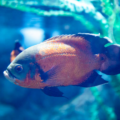
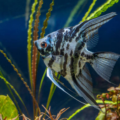
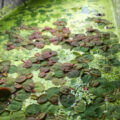
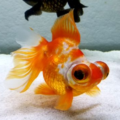
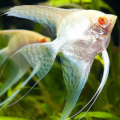
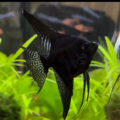
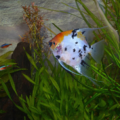
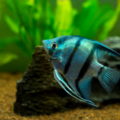
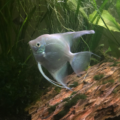
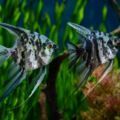
1 thought on “The Altum Angelfish: A Comprehensive Profile of this Enigmatic Beauty”